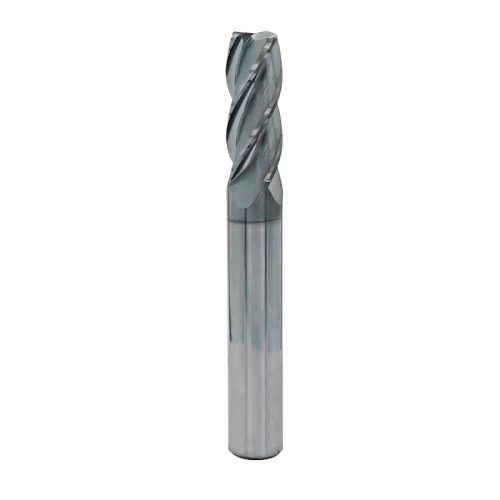An end mill cutter is a unique tool used in machining processes, particularly in milling operations. It is a type of cutting tool that is designed with several cutting edges on its cylindrical shape. These cutting edges, also known as flutes, help remove material from a workpiece as the cutter rotates. With its ability to perform multiple tasks, the end mill cutter has become an indispensable tool in various industrial applications.
To understand how an end mill cutter works, let’s take a closer look at its structure and the process involved. The cutter is typically made from high-speed steel or carbide, providing it with exceptional strength and durability. The cutting edges or flutes are arranged in a helix pattern along the length of the cutter, allowing for efficient chip evacuation and reducing the chances of the cutter becoming clogged.
When the end mill cutter is used, it is secured in a milling machine or a CNC machine. The workpiece is then placed, and the cutter is brought into contact with the material. As the cutter rotates, the cutting edges make contact with the workpiece, removing excess material in the process. The depth and width of the cut can be controlled by adjusting the position of the cutter, allowing for precise machining operations.
One of the significant advantages of using an end mill cutter is its versatility. It can perform a wide array of cutting operations, including contouring, slotting, and profiling. For example, when machining a groove on a metal surface, the end mill cutter can be used to remove the material along the desired path, creating the desired groove shape. This flexibility makes it a popular choice in industries such as aerospace, automotive, and manufacturing.
Furthermore, the end mill cutter can achieve high accuracy and surface finish on the workpiece. Its multiple cutting edges distribute the cutting load evenly, reducing vibration and enhancing stability during the cutting process. This results in a smooth finish and minimal tool marks on the workpiece. The ability to achieve precise tolerances and superior surface finish is particularly crucial in industries where quality and precision are paramount.
In addition to its excellent performance, the end mill cutter also offers increased productivity. With its ability to remove material efficiently, it reduces the processing time required for a task. This is especially beneficial in high-volume manufacturing environments where speed and efficiency are crucial. The cutter’s durability also contributes to increased productivity, as it can withstand the demands of heavy machining operations, reducing the need for frequent tool changes.
The end mill cutter finds its application in a wide range of materials, including metals, plastics, and composites. Whether it’s aluminum, stainless steel, or even exotic alloys, the cutter can handle the material with ease. This adaptability makes it a valuable tool in industries that work with different materials, such as construction, aerospace, and automotive.
In conclusion, an end mill cutter is an indispensable tool in machining operations, known for its versatility, accuracy, and productivity. Its unique structure and cutting principles enable it to perform a wide array of cutting tasks with precision and efficiency. With its ability to achieve superior surface finish and handle various materials, the end mill cutter has become a favorite tool in industries that value quality and productivity.

